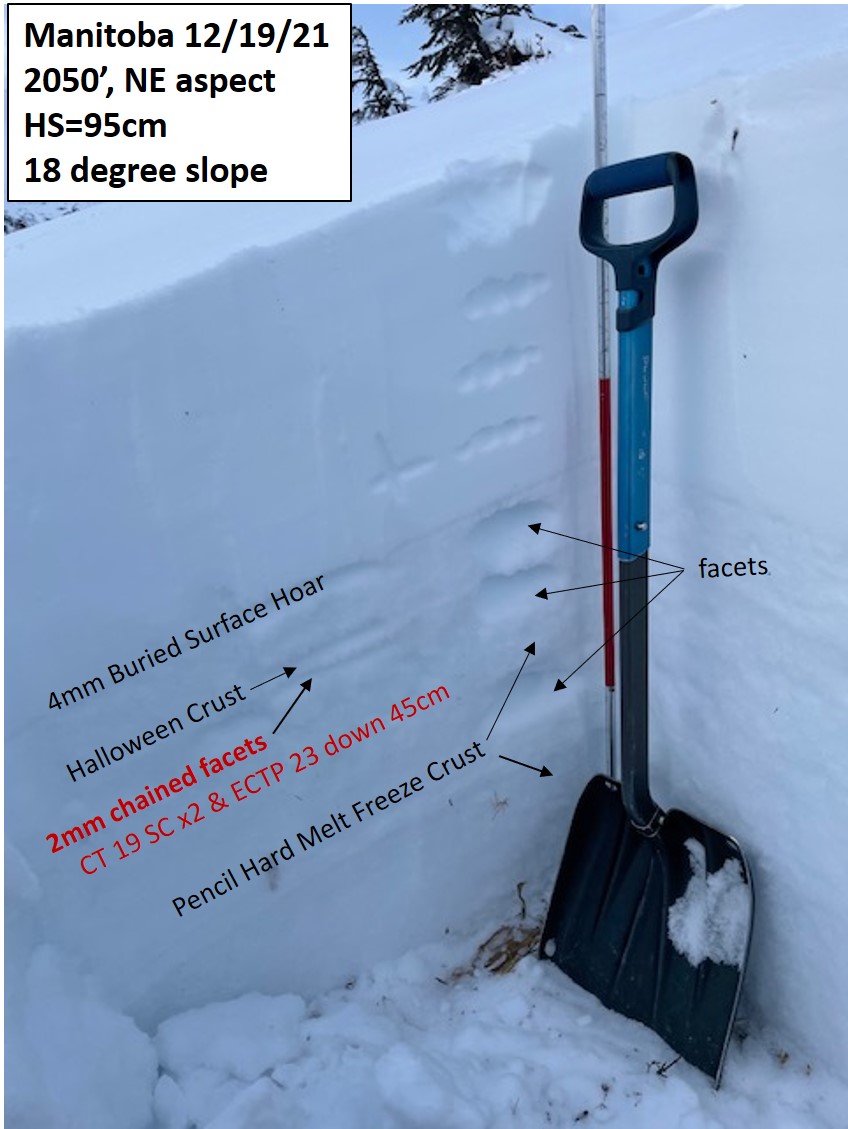Happy Winter Solstice, everyone! A quick shot of snowfall was over the region yesterday. Girdwood, Placer Valley, and Turnagain Pass all saw around 3-5″ of new snow, including to the south of Turnagain Pass. Although this is a nice refresh, maybe not so much above the trees as right around 2am this morning those pesky northwest winds really ramped up.
The Sunburst weather station, which doesn’t pick up this wind direction very well, saw a gust to 48mph. The AKRR Milepost 43 station, which does pick up these winds well, recorded a gust of 70mph at 4am. That said, average winds have been around 20mph, just right for moving snow. The wind should remain through the day and diminish somewhat before increasing again tonight.
Fresh wind slabs should be easy to find and trigger on those slopes that see recent or active wind loading. Natural winds slabs are possible as well in these windy locations. If you are headed out today, watch for those signs of wind loading, cracking in the snow around you and feel for stiffer snow over softer snow. These northwest winds have unusual loading patterns. They can funnel through Turnagain Pass in a way that produces a south wind on the east (non-moto) side of Turnagain Pass, which creates loading on the north side of the ridges. The winds can also split around Turnagain Pass, saving it from too much wind damage in general, but it’s too early to tell if this will be the case.
The good news is, we should be able to easily use our observation skills to suss out whether the winds have, or are, moving snow around in the area we choose to travel. If there is no wind effect, then we are dealing with that annoying persistent weak layer 2 to 5 feet down or any old wind slab that could be lingering from days ago.

 Snow pit at 2,050′ in the Summit Lake area that has a shallower snowpack, just to the south of the advisory area. A large whumpf was experienced at this location, evidence that the facets are able to collapse with the weight of a person(s). Photo: Andy Moderow, 12.19.21.
Snow pit at 2,050′ in the Summit Lake area that has a shallower snowpack, just to the south of the advisory area. A large whumpf was experienced at this location, evidence that the facets are able to collapse with the weight of a person(s). Photo: Andy Moderow, 12.19.21.